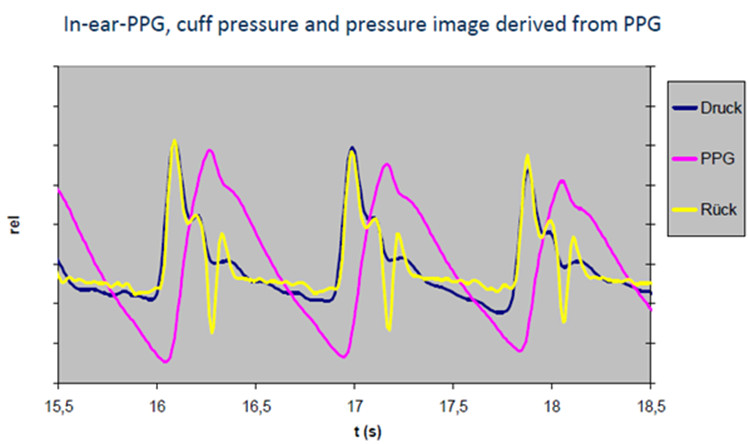In our society, the number of patients with chronic heart disease is steadily increasing. This disproportionate prevalence, especially in western countries, is also due in particular to risk factors that patients expose themselves to through their lifestyle: Stress, obesity, diabetes, arteriosclerosis, high blood pressure or lack of exercise are just a few examples of prominent risk factors that are often mutually dependent.
Doctors find important diagnostic information when examining the time course of the pulse wave in the arteries. The precise analysis of the subtleties of the pulse waveform allows statements to be made about the vascular condition and the central blood pressure of a patient. A non-invasive way of measuring the pulse waveform is to record the pressure curve in an upper arm cuff inflated above systolic pressure. Such measurements are inherently uncomfortable and can only be used for a short time.
At the CiS Forschungsinstitut für Mikrosensorik GmbH, photoplethysmographic sensors have been developed which, with a high signal-to-noise ratio, enable a detailed shape analysis of pulse waves measured in the ear. By comparing the photoplethysmographic pulse shape recorded in the ear with the suprasystolic pressure wave recorded synchronously in time on a cuff, it was possible to develop a model for the transfer of the pressure wave into the photoplethysmogram (PPG). With the resulting back-calculation of the PPG into an image of the peripheral blood pressure wave, new possibilities arise for the continuous recording of such data with little stress on the patient. In principle, the pulse wave velocity can also be determined from the component decomposition of the pressure waveform.
Initial tests confirm that continuous monitoring of blood pressure changes is possible with photoplethysmographic sensors and common mathematical circulation models. The conveniently portable ear sensor can thus open up new avenues for long-term monitoring of cardiovascular status. With the clinical assessment and evaluation of the technical solution, the next steps are already planned.
Presentation of the results:
electronica, 08-11 November 2016, Munich, Hall B1, Booth 225
COMPAMED, 14-17 November 2016, Düsseldorf, Hall 8A, Booth H23.1




